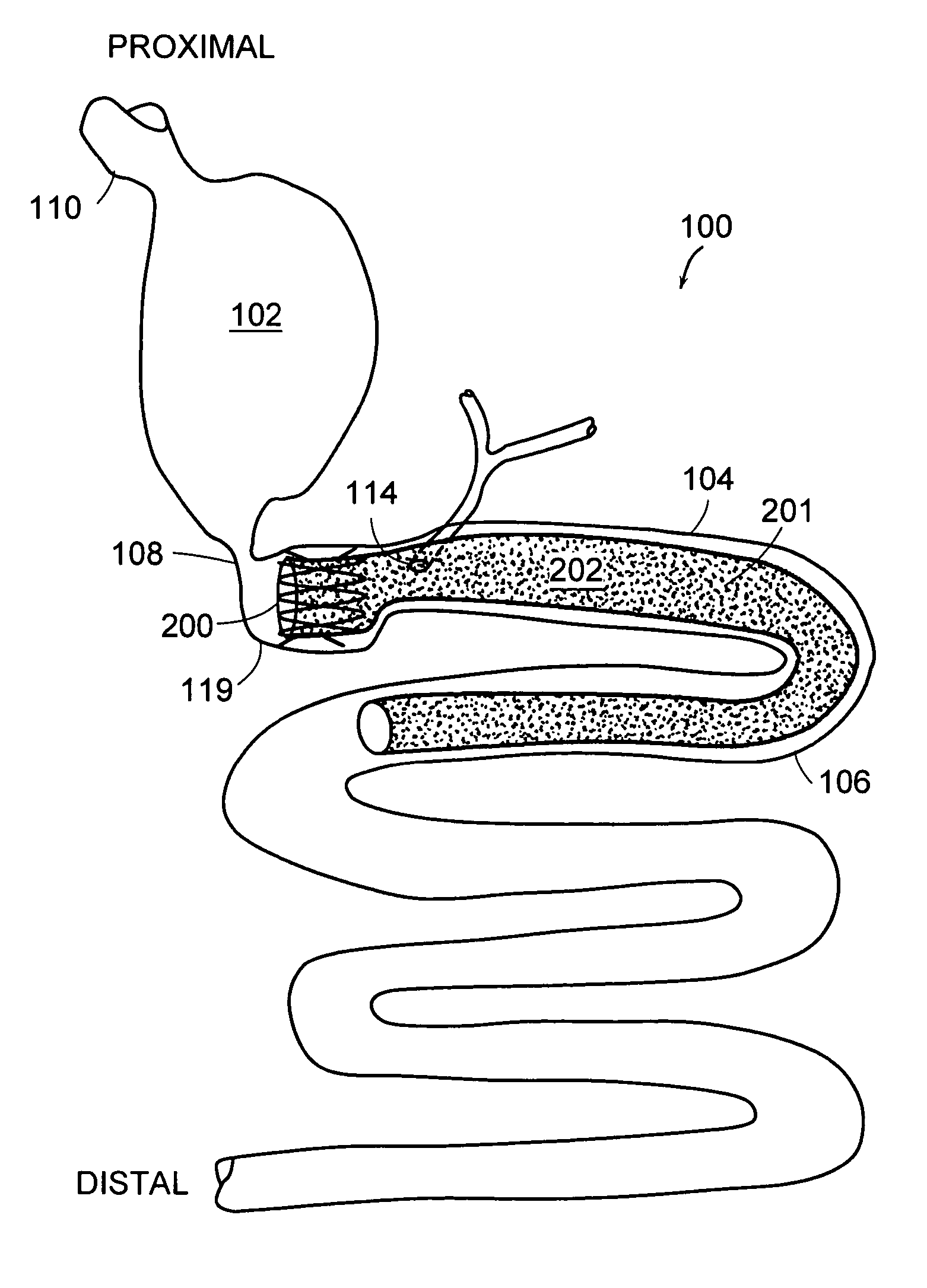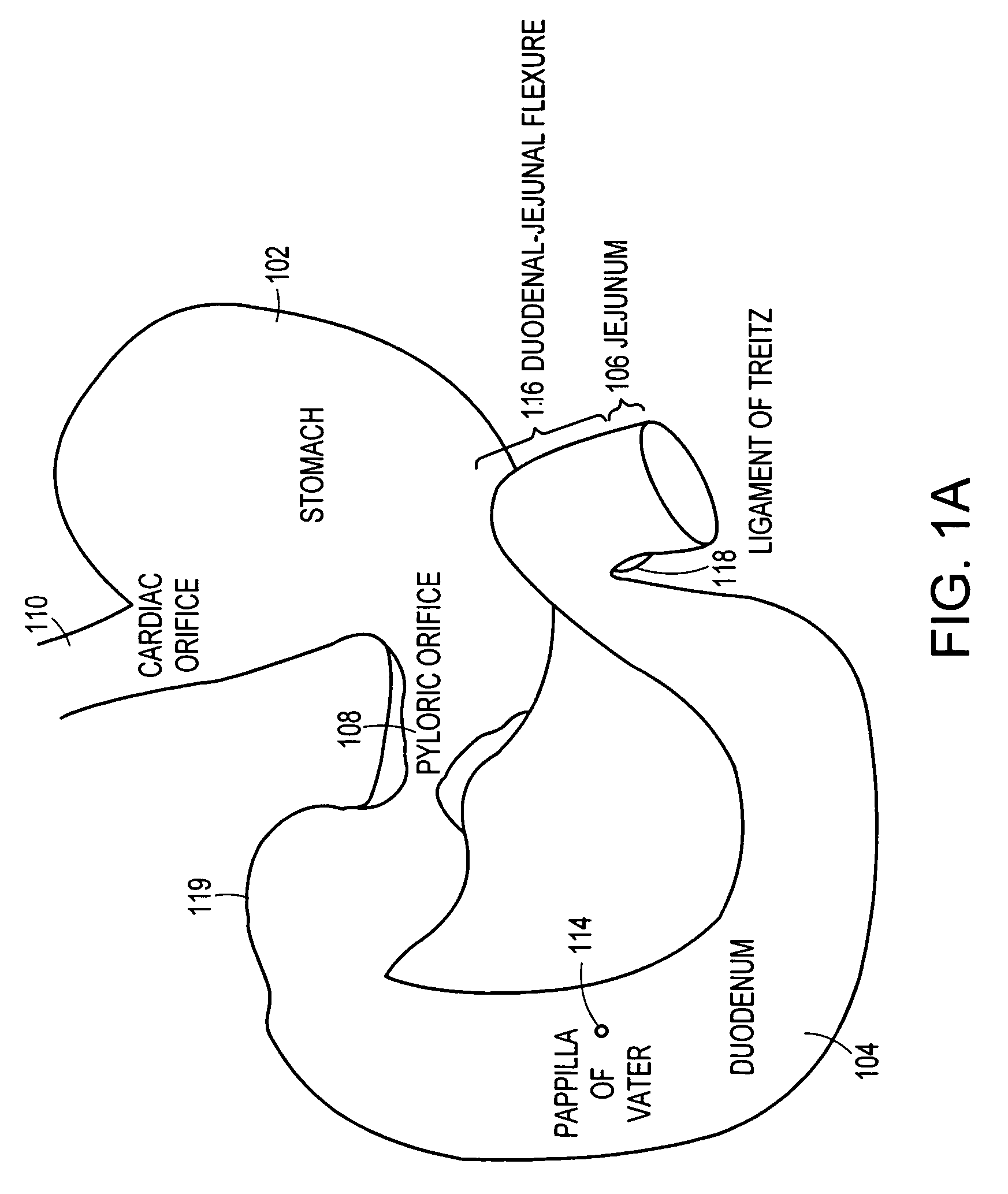Gastrointestinal anchor compliance
a technology for gastrointestinal and gastrointestinal joints, applied in the field of gastrointestinal anchor compliance, can solve the problems of presenting an overwhelming health problem, annual us healthcare costs, and americans spending $33 billion per year on weight loss products, so as to improve the ability to secure anchors and devices, improve the retention of anchors, and minimize migration
- Summary
- Abstract
- Description
- Claims
- Application Information
AI Technical Summary
Benefits of technology
Problems solved by technology
Method used
Image
Examples
Embodiment Construction
[0038]FIG. 1A is a sectional view of a portion of a digestive tract in a body, which will be referred to in the description of preferred embodiments of the invention in subsequent sections.
[0039]Food to be digested enters the stomach 102 through the cardiac orifice 110 from the esophagus. Chyme, a semi-fluid, homogeneous creamy or gruel-like material produced by gastric digestion in the stomach exits the stomach through the pyloric orifice (pylorus) 108 and enters the small intestine 112. The pylorus 108 is a distal aperture of the stomach 102 surrounded by a strong band of circular muscle. The small intestine, about nine feet in length, is a convoluted tube, extending from the pylorus 108 to the ileo-caecal valve where it terminates in the large intestine. The small intestine has three sections, the duodenum 104, jejunum 106 and the ileum (not shown). The first eight to ten inch section of the small intestine 112, the duodenum 104, is the shortest, widest and most fixed part of the...
PUM
 Login to View More
Login to View More Abstract
Description
Claims
Application Information
 Login to View More
Login to View More - R&D
- Intellectual Property
- Life Sciences
- Materials
- Tech Scout
- Unparalleled Data Quality
- Higher Quality Content
- 60% Fewer Hallucinations
Browse by: Latest US Patents, China's latest patents, Technical Efficacy Thesaurus, Application Domain, Technology Topic, Popular Technical Reports.
© 2025 PatSnap. All rights reserved.Legal|Privacy policy|Modern Slavery Act Transparency Statement|Sitemap|About US| Contact US: help@patsnap.com



